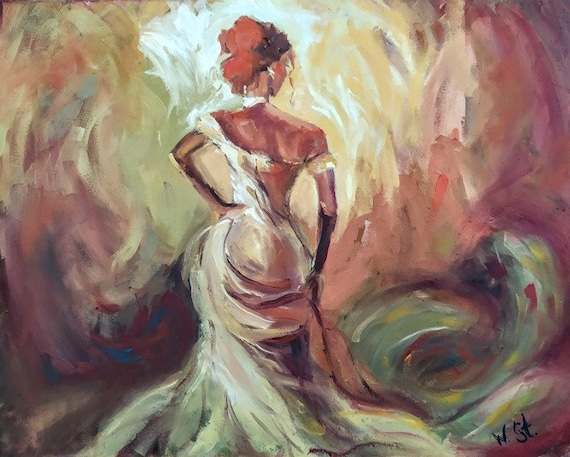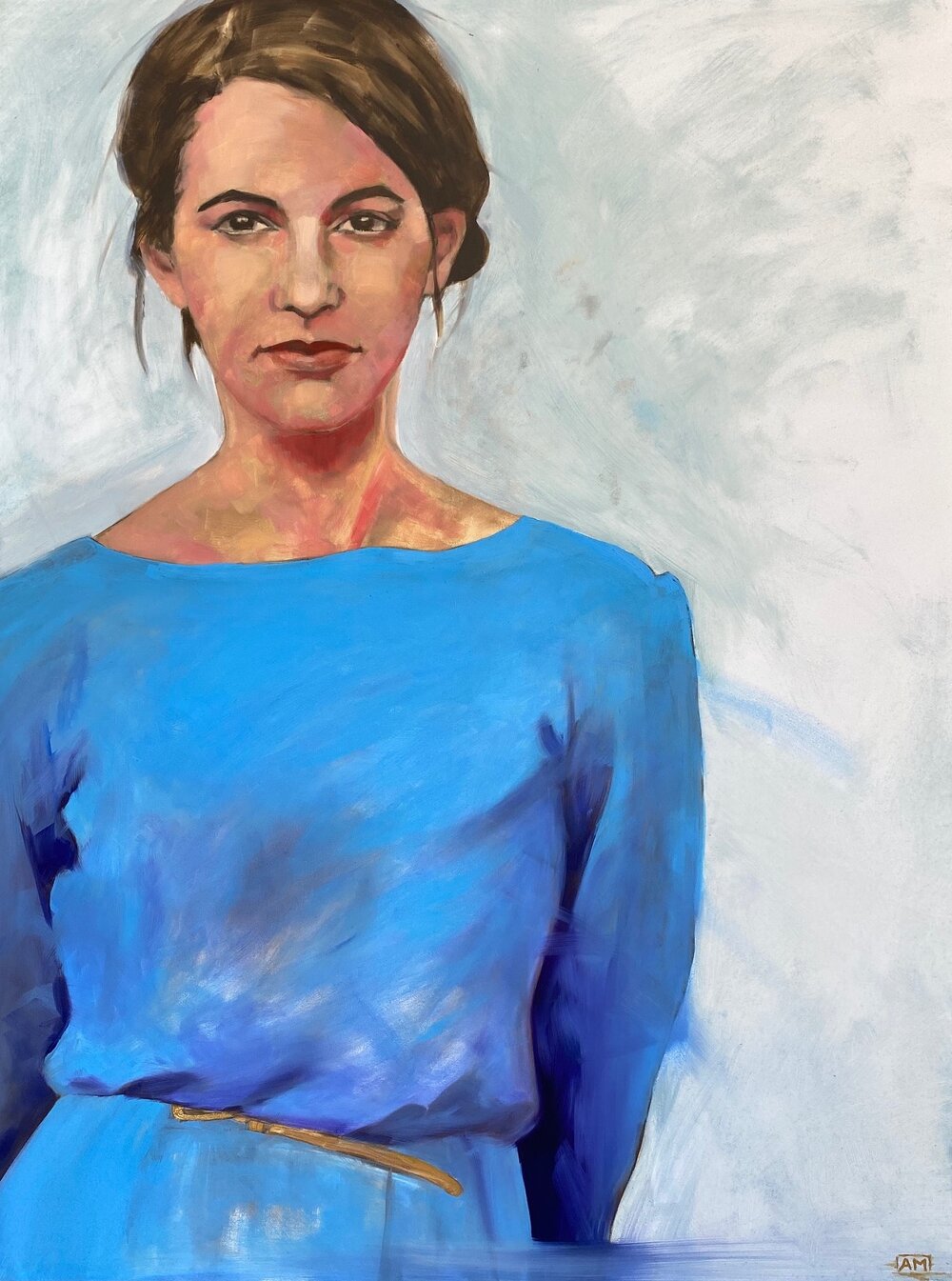The Advancement of Metaphorical Oil Painting: Understanding Its Historic Relevance and Modern Interpretations
The development of figurative oil painting offers as a compelling lens via which to analyze the interaction between creative expression and historical context. Contemporary artists, attracting from this rich heritage, are currently reinterpreting the human number in means that test standard stories.
Origins of Metaphorical Oil Paint
The beginnings of metaphorical oil painting can be mapped back to the very early Renaissance in Europe, specifically in the 15th century. This period noted a significant departure from the stiff kinds and level representations particular of medieval art. Musicians started to explore naturalism, emphasizing the human figure and its emotional expression. The growth of oil paint permitted greater depth of shade and information, enhancing the realism and vibrancy of their work.

In this transformative period, numbers were commonly illustrated within contextually rich atmospheres, showcasing not only their physical attributes yet additionally their mental states. Pioneers such as Jan van Eyck and Titian utilized the tool's convenience, utilizing layering methods to achieve luminance and appearance. This advancement facilitated the representation of complex fabrics and the nuances of complexion, contributing to the development of portrait and narrative scenes.
Additionally, the Renaissance focus on humanism promoted a gratitude for individualism, which subsequently influenced musicians to produce even more relatable and vibrant numbers - figurative oil painting. Because of this, metaphorical oil painting arised as a powerful lorry for storytelling and psychological interaction, preparing for future creative movements and designs
Key Historical Activities
Considerable historic motions have actually shaped the advancement of figurative oil paint, each adding special philosophies and methods that increased the medium's opportunities. The Renaissance marked a turning point, emphasizing realistic look and the human form, with artists like Leonardo da Vinci and Michelangelo pressing the boundaries of anatomical precision and perspective. Following this, the Baroque age brought significant contrasts of light and shadow, exemplified by Caravaggio, that instilled religious styles with extreme emotionality.
The 19th century introduced Romanticism and Realism, where musicians such as Delacroix and Courbet tested classical suitables, concentrating on specific expression and everyday life. The development of Impressionism better transformed the medium by stressing the effects of light and color, bring about a separation from traditional representation.
In the early 20th century, activities like Expressionism and Cubism redefined metaphorical paint through abstraction and the exploration of emotional depth. Each of these activities not just showed the societal modifications of their times yet also prepared for contemporary analyses. The interaction between these historic activities has created an abundant tapestry of styles and approaches, influencing contemporary artists in their pursuit of capturing the human experience on canvas.
Techniques and Products Advancement

Throughout the Baroque period, strategies such as chiaroscuro and sfumato emerged, boosting the emotional vibration of figurative compositions. Musicians started to explore glazes and impasto, controling texture and brightness. By the 19th century, developments like making use of pre-mixed paints in tubes revolutionized access, allowing musicians to paint en plein air and catch the short lived effects of light.
The 20th century observed the introduction of artificial pigments and tools, which expanded the combination and altered the consistency of oil paints. The exploration of brand-new application strategies, such as palette knives and brushes of differing rigidity, further diversified creative expression. Jointly, these advancements show the advancing relationship between materials, strategies, and the artistic vision fundamental in metaphorical oil paint.

Contemporary Interpretations
Contemporary interpretations of figurative oil painting reflect a dynamic dialogue between tradition and development, where artists challenge established norms and explore diverse themes. This evolution manifests in various ways, as contemporary artists blend classical techniques with modern concepts, frequently dealing with social, political, and personal narratives.
Several experts draw inspiration from historical jobs, yet they instill their pieces with contemporary Discover More perspectives, making use of the human kind as an automobile for commentary on sex, society, and identity. Artists increasingly experiment with abstraction, distortion, and multimedias, which permits a wider interpretation of the number and its context.
Moreover, the usage of dazzling color combinations and unusual structures typically serves to interfere with standard seeing experiences, prompting vital engagement from target markets. This shift in emphasis extends past looks; it reflects an expanding awareness of the intricacies of human experience in an interconnected world.
As metaphorical oil painting proceeds to evolve, it stays a vital tool for exploring the nuances of modern life, embodying both a regard for heritage and a commitment to this contact form modern idea. The result is an abundant tapestry of expression that reverberates with the complexities of the modern-day human condition.
Effect On Modern Art
The influence of figurative oil painting on contemporary art is extensive, as it has actually constantly influenced a myriad of imaginative activities and practices throughout the 20th and 21st centuries. From Expressionism to Surrealism and beyond, the expedition of the human number has actually continued to be a central theme, enabling artists to communicate intricate feelings and stories. This focus on figurative representation has resulted in a re-examination of standard methods, causing cutting-edge strategies that mix realistic look with abstraction.
Moreover, contemporary artists have embraced metaphorical oil paint as a way to address social and political issues, utilizing the medium to challenge perceptions of identification, society, and sex. The resurgence of passion in metaphorical job in current years shows a yearning for connection in an increasingly digital globe, where human experience and feeling are vital.
Furthermore, the dialogue in between metaphorical oil painting and modern art is evident in the jobs of musicians such as Kehinde Wiley and Jenny Saville, who draw on historic recommendations while infusing their items with modern relevance. Ultimately, metaphorical oil painting continues to form and redefine contemporary artistic expression, emphasizing its long-lasting importance in the art world.
Verdict
The advancement of figurative oil paint highlights its historic value and adaptability throughout various creative activities. Eventually, metaphorical oil paint continues to be a vital tool for exploring the human experience, reverberating profoundly in today's electronic landscape.
The development of figurative oil paint offers as an engaging lens via which to check out the interplay in between imaginative expression and historical context.Considerable historic motions have actually formed the advancement of metaphorical oil paint, each contributing unique ideologies and techniques that increased the tool's possibilities.As historic activities shaped the trajectory read this of metaphorical oil paint, the products and techniques employed by artists have actually additionally undertaken considerable makeovers. figurative oil painting.The impact of metaphorical oil paint on contemporary art is profound, as it has actually consistently inspired a myriad of artistic activities and practices throughout the 21st and 20th centuries.The development of metaphorical oil painting underscores its historical value and flexibility throughout numerous imaginative activities